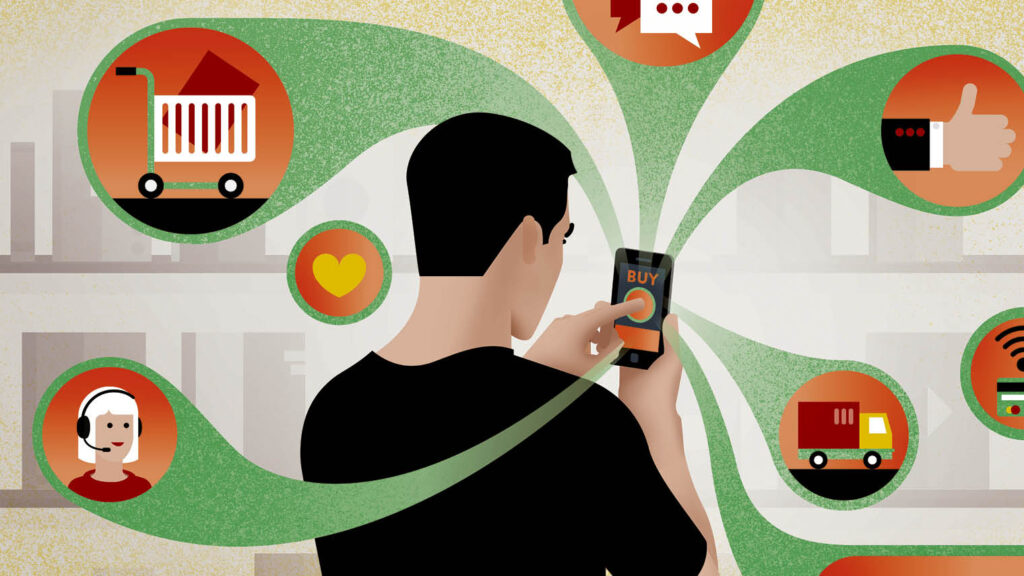Few people relish the insurance claims process. When the time comes, customers want to be able to report their claim 24/7 on the channel that is most convenient. They also want to be able to submit supporting documentation as quickly as possible. Transparency and constant communication is crucial. The journey should end with a timely, fair settlement.
Making a claim is a high peak. It’s the moment of truth when the insurer either comes good on their promises or they don’t. People judge an experience on how they felt at the peak, or the end of an experience, when emotions are most heightened. This is the thinking behind the peak-end rule, based on the work by Daniel Kahneman. The claims team has an outsized influence on making or breaking the customer relationship.
The convenient truth
Insurers that make it easy to make a claim make it easy to be a customer. This is the convenient truth. And there are insurers that are doing the right thing by their customers. These include brands like Aviva, which is rated top by both drivers and householders for claims satisfaction, according to Consumer Intelligence’s Insurance Behaviour Tracker. Churchill takes second spot for car drivers and Barclays takes second spot for householders.
Making a claim has a disproportionate impact on customer loyalty
As we just mentioned, loyalty is either reinforced or weakened depending on the claims experience. Making a claim has a significant impact on what customers do next. Some customers will coast along in neutral but most are becoming more active and more vocal. A good experience = higher satisfaction, more word of mouth referrals and more spend. Insurance companies that score highly on claims satisfaction are rewarded with higher than average Net Promoter Scores. Let’s crunch some of the numbers on this.
The average NPS score for home insurance brands is 5.7. But for the companies that came out top in the Consumer Intelligence report the score is 15.8. For motor insurance the average score is 7.5. The NPS score increases to 12.8 for the award winners. Meanwhile, the average customer retention rate for home insurance brands is 63.6%. For the award winners this jumps by around 5% to 68.5%. There is a 4% gain for motor insurance award winners at 64.8% compared with the industry average at 60.8%.
Very satisfied customers are more likely to recommend their insurer to others. So the claims process is the moment of truth for the insurer too. A poor experience = unhappy customers, negative reviews, fewer referrals and more customers going into flight mode. The claims process is high stakes for carriers that decide to drift along with a poor experience.
The inconvenient truth
Unpaid claims, endless paperwork, confusing processes, frustrating calls and long wait times all make it easy to not be a customer. Almost one in three customers think that insurers oversell products, they are reluctant to pay out claims, or they think it is a necessary but inconvenient service, according to Guidewire. There is a deep-rooted problem here. Customer loyalty is fragile. But there is an opportunity for insurers to win business by offering tailored coverage and allinclusive packages. The Guidewire study also discovered that 55% of consumers would consider consolidating all of their insurance policies into one, personalised package provided by a single carrier. Even customers that thought insurance was overpriced would consider the move.
Building customer loyalty through empathy
Many insurers mistakenly think improving their customer experience and the claims journey means investing in digital and data. In the stampede to digitally transform (accelerated by Covid), a key CX ingredient is missing – human empathy and the personal touch at a time when the customer is stressed, anxious and seeking help. Digital tools can simplify and expedite the claims process – almost 61% of customers prefer to use them to monitor their application status. And self-service puts power in the hands of the policyholder.
But customers also want to talk to a real person. They want to find a friendly voice at the end of a telephone. They want to know who is handling their claim and trust that they will be treated with empathy and care. It’s this empathy and personal touch that helps an insurer build an emotionally committed relationship in an otherwise soulless experience devoid of much meaningful contact.
No insurer would survive without investing in innovative technology that makes life easier and more convenient for customers. Tech improves process and product and customer data gives insurers the insights they need to improve the claims journey. But it is just the enabler of a great experience. It’s people that make the real difference.
Humanising the claims experience – Zurich
Zurich has partnered with Sprout AI to roll out an automated policy checking system to reduce claims times (even for six-figure sums) to just a few hours instead of making customers wait days for a decision. But Zurich is also invested in the well-being of its customers and recognises the psychological and emotional toll that making a claim can take.
Last year it launched Zurich Support Services whereby claimants and their immediate family have access to five free counselling sessions. The insurer offers more than just counselling at a time of loss and customers can talk about anything from daily life worries to major life events. If they can’t help, they will recommend somebody who can. This is how you differentiate on experience when the G-Force for the sector is rooted in digital.
Boosting loyalty through service and process
The first notice of loss (FNOL) is often the first interaction that a customer has with their carrier. It’s one of the most important elements of the customer experience for claimants. This is borne out in J.D. Power’s Auto Claims Satisfaction Study and Property Claims Satisfaction Study. The data analytics and consumer intelligence company found that the way an insurer handles FNOL accounts for 25% (auto) and 26% (property) of insurance customer’s satisfaction. The combination of services available at FNOL have a major impact on satisfaction levels.
Improving the FNOL experience – Ping An Property & Casualty Insurance Company
Let’s take a look at how our second insurer, Ping An Property & Casualty Insurance Company, is enhancing its FNOL process. Ping AN P&C has rolled out its ‘one-click claims service’. Customers that use its app, which has 36 functions, can have their accident claims settled in as little as two minutes. In the event of an accident, the car driver uses the app to report the accident and upload a photo of the scene (especially collision damage).
Within seconds the loss report is generated, the impact on their premium is calculated so they can gauge whether they should make a claim or not, a trusted repair is recommended and the customer is given an estimated cost. With over 123 million users, the one-stop app also lets customers input payment details, sign agreements, enquire about their claims progress and book a whole range of services from repairs to roadside recovery services to valeting to Covid-secure sanitising.
Expediting the decision making process – Axa UK
Axa UK is another good example of an insurer that is transforming their claims process. The insurance company has launched a new machine learning tool to streamline complex property claims and make decision-making quicker. BETSIE (Buildings Enhanced Triage Steering Intelligence Engine) simplifies the claims triage process and increases the speed and accuracy of claims resolution.
The tool uses data, analytics and historical learning to support claims handlers in identifying the most effective triage route, and speed up the time it takes to make a decision. Cycle times for customers are improved and they don’t need to ask as many questions along the way. In a six-month pilot test of escape water claims, about 1,300 claims were processed and there was a 25% reduction in claims being re-routed. Axa also reported significant cost savings. BETSIE will also be used for fire damage and weather-related claims such as flood and storm damage.
A final thought …
Transforming a critical moment like insurance claims requires internal cultural and organisational change to ensure that your new promise to customers is delivered on the ground. Coaching, training and education is essential so that everybody understands the value of the implementation to the customer, and their work. Change on this scale requires leadership from the top down and cross-functional co-operation. It requires an internal analysis of customer data, capabilities and gaps. Insight from external CX best practice (inside and outside the sector) will also be crucial to the implementation plan.
And we don’t just mean best practice from companies like Amazon or InsurTechs like Lemonade. In the rush to digitise and be more Amazonian, carriers are at risk of losing a critical opportunity to offer customers the support of an empathetic person at the moment of truth. The most progressive insurers are looking at how to equip their people with skills to serve customers with empathy and add that personal touch at a time when their customers are most in need.
Source: Customer Think








